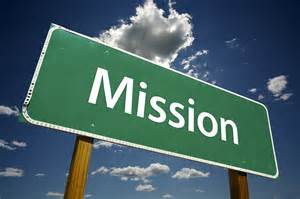 Ninety-nine percent of the mission statements out there are useless. Have you read them? Indeed, some read more like an essay than a statement.
Ninety-nine percent of the mission statements out there are useless. Have you read them? Indeed, some read more like an essay than a statement.
The Global Beauty Leader. We will build a unique portfolio of Beauty and related brands, striving to surpass our competitors in quality, innovation and value, and elevating our image to become the Beauty Company most women turn to worldwide.
The Women’s Choice for Buying. We will become the destination store for women, offering the convenience of multiple brands and channels, and providing a personal high touch shopping experience that helps create lifelong customer relationships.
The Premier Direct Seller. We will expand our presence in direct selling and lead the reinvention of the channel, offering an entrepreneurial opportunity that delivers superior earnings, recognition, service and support, making it easy and rewarding to be affiliated with Avon and elevating the image of our industry.
The Best Place to Work. We will be known for our leadership edge, through our passion for high standards, our respect for diversity and our commitment to create exceptional opportunities for professional growth so that associates can fulfill their highest potential.
The Largest Women’s Foundation. We will be a committed global champion for the health and well-being of women through philanthropic efforts that eliminate breast cancer from the face of the earth, and that empower women to achieve economic independence.
The Most Admired Company. We will deliver superior returns to our shareholders by tirelessly pursuing new growth opportunities while continually improving our profitability, a socially responsible, ethical Company that is watched and emulated as a model of success.
Some say virtually nothing, like this one: “To grow profitably and provide shareholder value.” Who doesn’t want those things?
Most companies use fluffy language provided by a marketing firm or a consultant that sounds polished, but remove anything that makes them stand out as an organization.
What good are these statements? How do they help your business? The short answer: They don’t.
Whenever I walk into an organization and ask employees what the organization’s mission is, I typically get varied responses:
- “I don’t know.”
- “Let me look that up”
- “Let me find that for you.”
- The blank stare.
Basically, I get a different answer from everybody.
Mission statements hang on a wall or adorn a website page and that is about all. But a mission has the potential to guide organizations into real action.
For example, during the Cola Wars, Pepsi had one of the best missions. Simply put in just two words the mission was “Beat Coke.” (By the way, it was at a time when Pepsi made Coke a little nervous because they made strides during that time.)
Granted, there is a life expectancy to that mission, and it needs to change or be refreshed when it is no longer relevant. However, talk about, clear, concise and compelling—and real.
- Missions are known. Think about it: Would you send a group of soldiers into a conflict without a mission or without them knowing the mission? No way. But most organizations do just that.
- Missions are a rallying cry or call to action. Missions give us direction and something for which to shoot. I love St. Jude’s mission, for example. They will not settle until there is a cure for cancer. In fact, they consistently reference their success as the day they will put themselves out of business. They know why they come to work everyday!
- Missions are influencers of our work. When a mission is clear, concise, and compelling, it influences the way we work. Take Pepsi’s mission to “Beat Coke.” Every employee could ask themselves each day: “What am I going to do to help us beat Coke today?” What a powerful question. Try doing that with the mission statement at the top of this post.
- Missions are bigger than just one person. Missions bind groups of people together for a common goal or effort and help people rise above themselves. When done right, missions create pride and engagement. Homewood Suites, a consistent J.D. Powers Award winner, teaches its employees that their job is about providing a “Home away from home.” A place where extended stay travelers (a.k.a. Road Warriors) feel comfortable. Their jobs are bigger than their roles. Missions are about culture.
- Missions are constantly being revisited. Missions are alive and active. Whether you hold shift meetings, monthly meetings, use performance appraisals, or hold coaching sessions, missions are built in the operation and people threads of the business. We should measure how we are doing against our mission, train people on the mission and brainstorm new ways to make our mission stay fresh and alive. We should find ways to help people identify with and personalize their approach to the mission.
Missions are the glue that holds us together as an organization and connects us with our customers. Missions are the vehicle that helps us all drive in the same direction.
Bottom line: I hate mission statements. But I love missions!
Originally published in ATD